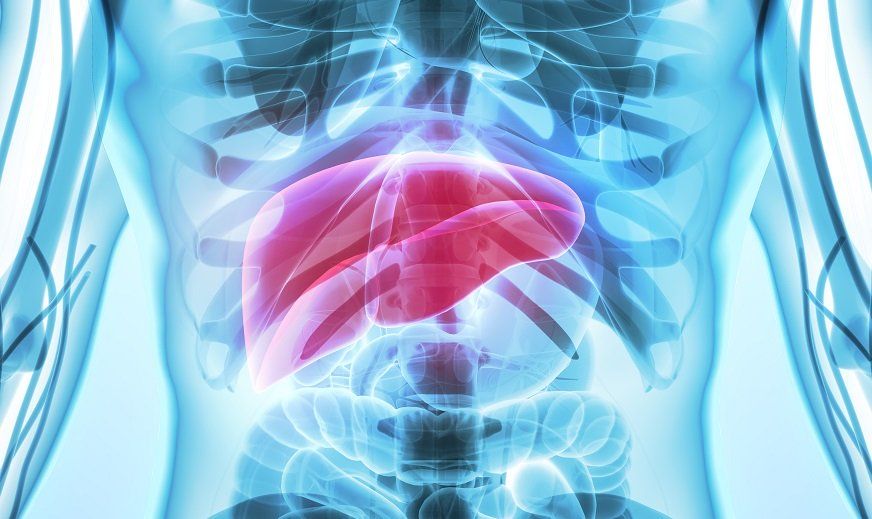News
Article
Up to 11% of US Adolescents Have Suspected MASLD, Study Finds
Author(s):
Key Takeaways
- The study found a 11.3% prevalence of suspected MASLD among adolescents, with 14.6% having elevated ALT levels.
- Elevated ALT was significantly associated with cardiometabolic risk factors, particularly BMI, dyslipidemia, and blood pressure.
The analysis of NHANES data found 11.3% of adolescents have suspected MASLD. Estimates were greater for those with elevated ALT.
Jeffrey Schwimmer, MD
Credit: UC San Diego

New research is shedding light on the prevalence of suspected metabolic dysfunction-associated steatotic liver disease (MASLD) among adolescents, additionally highlighting ALT’s role as a marker of metabolic dysfunction and liver disease.1
Leveraging National Health and Nutrition Examination Survey (NHANES) 2011-2020 data, the study estimated the overall prevalence of suspected MASLD in the adolescent population was 11.3%. Results showed 14.6% of adolescents had elevated alanine aminotransferase (ALT) levels, the majority of whom met the criteria for suspected MASLD.1
In 2023, new liver disease nomenclature was implemented to address concerns regarding the terminology “nonalcoholic fatty liver disease” and “metabolic-associated fatty liver disease,” instead introducing the term MASLD to describe patients with hepatic steatosis and ≥ 1 of 5 cardiometabolic risk factors.2
“While ALT has been widely used to screen for NAFLD, its role in identifying MASLD in pediatric populations remains underexplored,” Jeffrey Schwimmer, MD, a pediatric gastroenterologist and professor of pediatrics at the University of California San Diego, and colleagues wrote.1 “Understanding how ALT correlates with cardiometabolic risk factors and determining the prevalence of suspected MASLD among adolescents with elevated ALT are essential for guiding public health strategies and clinical management.”
To determine the prevalence of suspected MASLD among adolescents in the United States and to examine the relationships between elevated ALT and cardiometabolic risk factors, investigators conducted a cross-sectional analysis of NHANES data for adolescents 12-19 years of age.1
Investigators defined elevated ALT using sex-specific biological upper limits: > 26 U/L for males and > 22 U/L for females. Participants with elevated ALT were categorized as having suspected MASLD, elevated ALT due to other causes, or cryptogenic ALT elevation based on the following definitions:
- Suspected MASLD: the presence of elevated ALT and ≥ 1 cardiometabolic risk factor
- Elevated ALT due to other causes: viral hepatitis or medication-induced hepatotoxicity
- Cryptogenic ALT elevation: remaining cases without identifiable causes or cardiometabolic risk factors
In total, the study included 5012 adolescents with a mean age of 15.4 years, the majority of whom were male (51.7%) and White (54.6%). Among the cohort, 54.3% of patients had cardiometabolic risk factors for MASLD, 39.6% of whom were classified as having overweight (18.5%) or obesity (21.0%); 14.6% of whom met the criteria for dysglycemia; 2.9% of whom had elevated blood pressure; 3.6% of whom had elevated triglycerides; and 17.5% of whom had low HDL-cholesterol.1
Overall, 14.6% of participants had elevated ALT. Of these patients, 77.2% had suspected MASLD, 20.2% had cryptogenic ALT elevation, 1.9% took hepatotoxic medications and 0.7% had viral hepatitis.1
The overall prevalence of suspected MASLD within the entire study cohort was 11.3%. Investigators noted adolescents with elevated ALT were significantly more likely (P <.0001) to present with ≥ 1 cardiometabolic risk factor, with a prevalence of 77.2% (95% CI, 72.3–82.1), meeting the criteria for suspected MASLD.1
Upon analysis, body mass index (BMI) had the strongest association with elevated ALT. Adolescents with a BMI ≥ the 85th percentile had 3.5 times the odds of elevated ALT compared with those with a BMI below the 85th percentile (odds ratio [OR], 3.55; 95% CI, 2.94–4.28; P <.0001).1
Investigators pointed out indices of dyslipidemia also contributed significantly. Specifically, elevated triglycerides increased the odds of elevated ALT (OR, 2.09; 95% CI, 1.43–3.06; P = .0001), with a similar effect observed for low HDL cholesterol (OR, 2.05; 95% CI, 1.68–2.49; P <.0001).1
Further analysis revealed elevated blood pressure was also significantly associated with higher odds of elevated ALT (OR, 1.93; 95% CI, 1.22–3.06; P = .005).1
“These findings support the adoption of MASLD criteria in pediatric hepatology while also highlighting the need for continued research to optimize its application in children,” investigators concluded.1
References
Noon SL, Chun LF, Lam TBL, et al. Prevalence and Predictors of Suspected Metabolic Dysfunction-Associated Steatotic Liver Disease in Adolescents in the United States. Alimentary Pharmacology & Therapeutics. https://doi.org/10.1111/apt.70022
Brooks A. From NAFLD to MASLD: 2023 Brings New Liver Disease Nomenclature. HCPLive. December 13, 2023. Accessed February 13, 2025. https://www.hcplive.com/view/from-nafld-to-masld-2023-new-liver-disease-nomenclature





